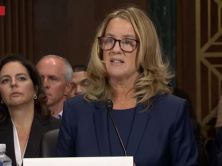
(Credit: IPSO, screenshot)
How should the media report on deaths? The UK press regulator Independent Press Standards Organization addressed that question last week in its latest guidelines.
Above all, IPSO advised journalists to be sensitive and discreet in reporting on death, while noting “the fact of someone’s death is not private.”
Journalists might have to report negative information about a deceased person, IPSO noted, but that is fine if it is accurate, justified and not insensitive. IPSO also warned that deciding what is appropriate or invasive, especially in reporting on a funeral, can be subjective. To prevent complaints, IPSO suggested journalists could talk to an “intermediary” of the deceased’s family to discuss the “family’s wishes.”
IPSO’s guidelines also accounted for inquests, the official inquiry into a death, reminding that “not all families” are aware that inquests are open to journalists. “There is a public interest in the reporting of inquests, which are public events in any case,” IPSO said. “In reporting an inquest, a journalist may clear up any rumours or suspicion about the death. They may also draw attention to circumstances which may lead to further deaths or injuries if no preventative action is taken.” Further, IPSO flagged that journalists should leave family members alone if they say they don’t want to be interviewed.
An IPSO spokesperson told iMediaEthics by e-mail that journalists often have asked IPSO for guidance in reporting on death, and pointed to its blogpost on the guidelines. “There was a lot of discussion earlier this year about whether and how journalists should approach the recently bereaved, particularly following the terror attacks in Manchester and London as well as the Grenfell Fire,” the blogpost said. “There seemed to be two prevailing opinions – either that journalists should never approach the bereaved because they are grieving, or that journalists should be allowed to do so because reporting on a death is in the public interest.”
Journalists shouldn’t be informing “immediate family members” about a death, IPSO added; instead, the authorities should alert the family before journalists contact or comment, or before publishing certain photos. “Journalists should also carefully consider whether they should publish any information about the death in the immediate aftermath that may inadvertently identify the deceased and thereby break the news of the death,” IPSO said. “For example, photos of the scene of a road traffic accident might lead to a family identifying a victim if it includes a vehicle’s number plate or other distinctive characteristics.”
IPSO also advised journalists take “particular care” in reporting on social media claims of deaths because there have been false news stories about alleged deaths that never occurred. For example, the Daily Star published a photo of a girl the paper said was missing after the Manchester bombing of an Ariana Grande concert. But, the girl was in fact home safe, and the newspaper had been duped by a bogus social media post, as iMediaEthics reported earlier this year.
Concerning suicide, IPSO recommended journalists follow the basic standards for reporting on suicide — don’t provide too much detail to avoid copycat deaths. Read the full guidelines.
UPDATED: 11/27/2017 11:40 AM EST







Comments Terms and Conditions